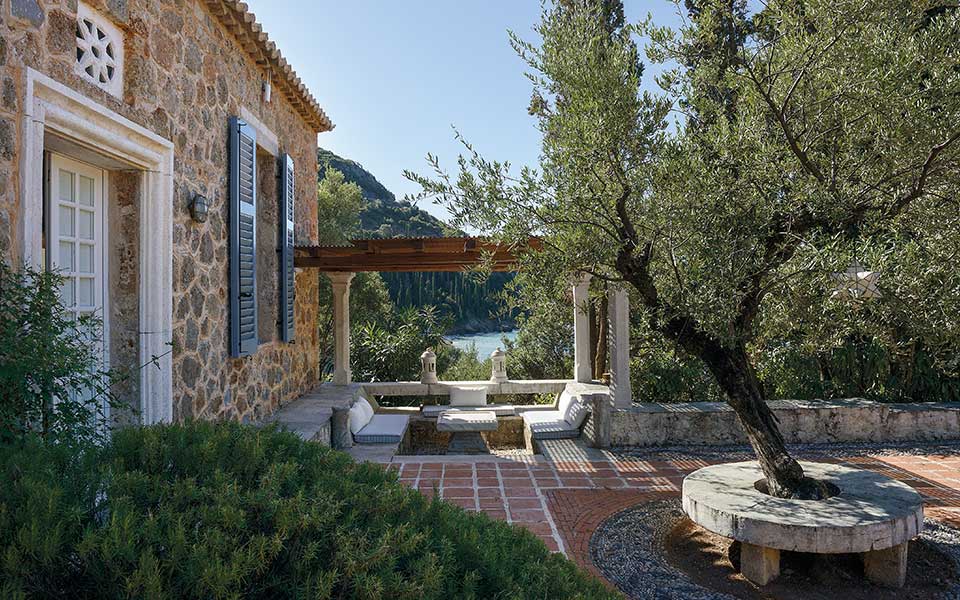In December 1933, 18-year-old Patrick Leigh Fermor purchased a pair of hobnail boots in an army surplus store in London and set out on a trip that would take him on foot from the Hook of Holland to Istanbul, the seat of the Byzantine Empire. This journey would be one of the two great adventures that would come to define this revered travel writer, the second being his experience as an agent for the British Special Operations Executive (SOE) in Crete between 1942 and 1944.
On the “great trudge” (as he would later call it) to Turkey, Leigh Fermor journeyed through a Europe that would shortly change forever as a result of the Second World War – ancient identities and cultures were soon to be savaged by conflict, and then brutalized by Soviet communism. His amazing trans-European trek ended in Istanbul in December of 1934, but he resumed his travels a few weeks later, going to Greece, to Mt Athos, where he experienced philoxenia, that enveloping Greek hospitality, for the first time.
It wasn’t just the welcome given to him by the monks of Mt Athos that impressed the young Briton; one storm-soaked night, when he was hopelessly lost in a forest near Pantocrator Monastery – cold, hungry and sodden – he was befriended by woodsmen who gave him shelter, raki and a place by their fire, before serenading him with a “strange wailing chant, clapping their hands together and tossing their heads about like dogs baying the full moon.”
After Mt Athos, the mysteries, spirituality and traditions of Greece would become touchstones in Patrick Leigh Fermor’s life, and Greece itself would gain paramount importance.
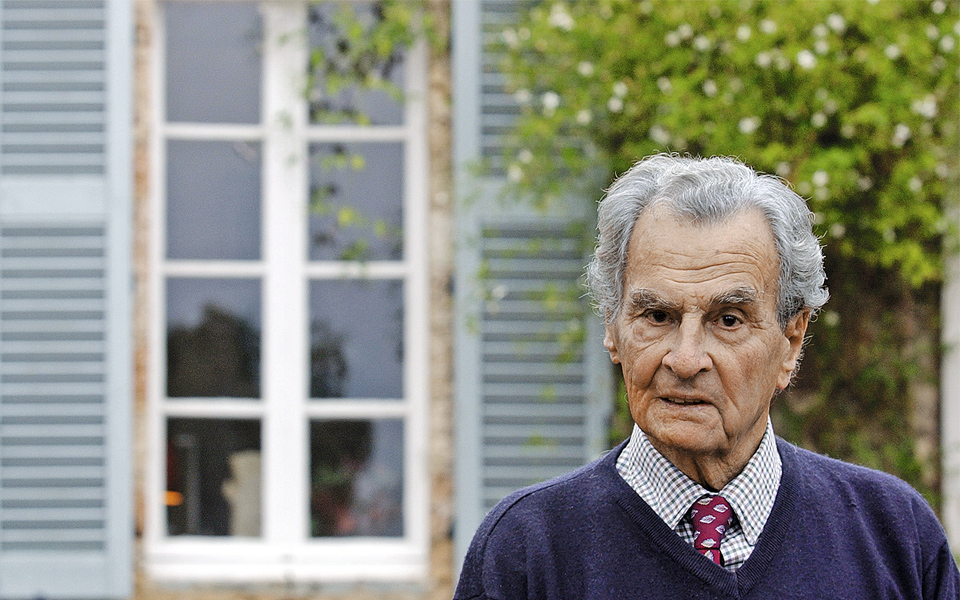
© AP photos
When, in 1940, the British Army’s Intelligence Corps were looking for officers with a knowledge of Greek, Paddy (as everyone called him) jumped at the chance, and it is his exploits as an SOE agent in occupied Crete, as much as his fabled walk across Europe, that are at the heart of the Leigh Fermor legend.
Paddy waded onto a beach at Irakleio (Heraklion) in June 1942, one of a number of British intelligence agents sent to work with the Cretan resistance. His audacious abduction, two years later, of General Kreipe, commander of the German forces on the island, was the act that would come to define him for many.
As for Paddy, the time he spent on the island, living in the mountains beside his andarte (rebel) brothers-in-arms or protected in villages by heroic civilians as together they all defied the German occupiers, left an indelible mark. In Crete, he witnessed philoxenia during wartime – the selfless generosity of thousands of ordinary Cretans who helped the Allied cause, many of whom would pay with their lives.
That Paddy chose to make his home in Mani in the Peloponnese after the war rather than on the island of Crete is unsurprising. His wartime actions and the intimate friendships that resulted from them would have made privacy impossible; the blood-ties were too deep, the mountain paths too well trodden. After everything that had happened, Paddy’s longed-for home in Greece would be a place to start afresh.
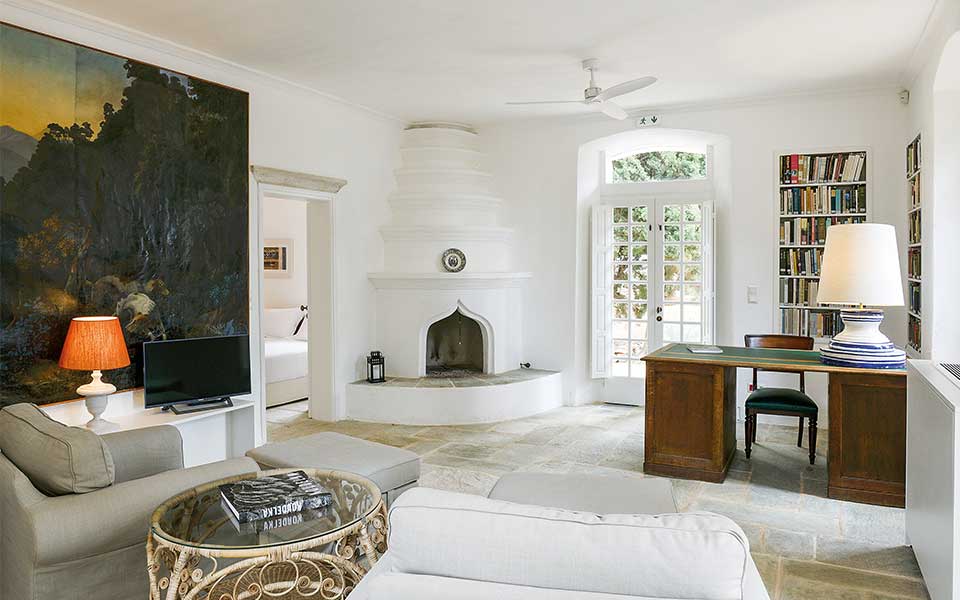
© Benaki Museum/Leonidas Kourgiantakis
Building the Leigh Fermor House in Mani
It was in late June 1962 that he first saw Kalamitsi (a name meaning “place of reeds”), a small peninsula south of the village of Kardamyli. He described finding it: “Walking down into a gently sloping world of the utmost magical beauty… The view is an enormous sweep of sea…Not a house in sight, nothing but the two rocky headlands, an island a quarter of a mile out to sea with a ruined chapel, and a vast expanse of glittering water, over which you see the sun setting till its last gasp. Homer’s Greece, in fact.”
Paddy went swimming that first day from the pebbled beach below the headland. He was smitten.
After nearly two years of negotiation with the landowners, Paddy and Joan signed the contract for the plot in March 1964; the price was over 200,000 drachmas (more than $6,700). By the summer, the Leigh Fermors were camping on the site and planning their future home.
Their choice of architect was Nikos Hadjimichalis, an expert on both Greek vernacular architecture and the preservation of traditional villages. Key to the project would be local stonemason Nikos Kolokotrones, whom Paddy described as “the last of seven generations of master-masons from Arcadia who had all played the violin.”
In the years that followed, the house, cradled in a bower of cypress trees, took shape. It would not, however, be completed until the end of the 1960s. Its details, lovingly assembled, were a kaleidoscope of artistic references gathered from Paddy’s and Joan’s travels; the pebbled terrace was based on designs from Olynthos, the ancient city of Halkidiki; a fireplace was modeled on ones that Paddy saw in Baleni, Romania; and a great circular marble dining table was inlaid with motifs copied from a 13th-century Verona church.
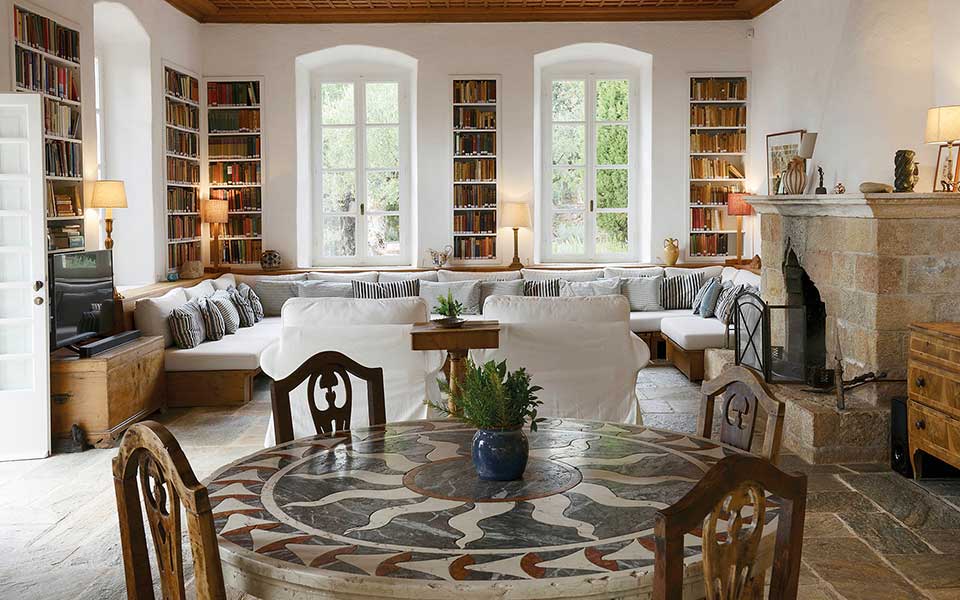
© Benaki Museum/Leonidas Kourgiantakis
The Most Generous Human Beings
For forty years, a legion of friends and admirers would beat a path to Paddy and Joan’s door. Artists, poets, royalty and writers came, all taking inspiration from their erudite hosts. A visit was an act of communion, a sharing of ideas and stories.
One guest in the 1980s was author Sofka Zinovieff, who remembers Paddy’s passion for entertaining. “When I met them, they were already in their seventies, but had the good looks and dynamism of people decades younger. The house seemed a mix between a Byzantine monastery and an English country home, with its stone arches and comfortable armchairs, the walls covered in books and paintings by Nikos Ghikas. Paddy loved being with people, it was his natural way to be.”
Like Zinovieff, American author David Mason became a friend of the Leigh Fermors in the 1980s, and even a neighbor for six months, living in a stone hut near the house. Thirty years later, writing for the Wall Street Journal, Mason recalled their grace and generosity. “Never inclined to introspection, Paddy was endlessly curious about the world, and that curiosity distinguished his life and writing from our confessional age. He insisted that the reference library be near the dining-room table for consultation during mealtime arguments… Paddy and Joan lent me books, fed me, regaled me with stories, introduced me to their friends, and never once required proof that I was a personage of any stature. They were the most generous human beings I have ever known…”
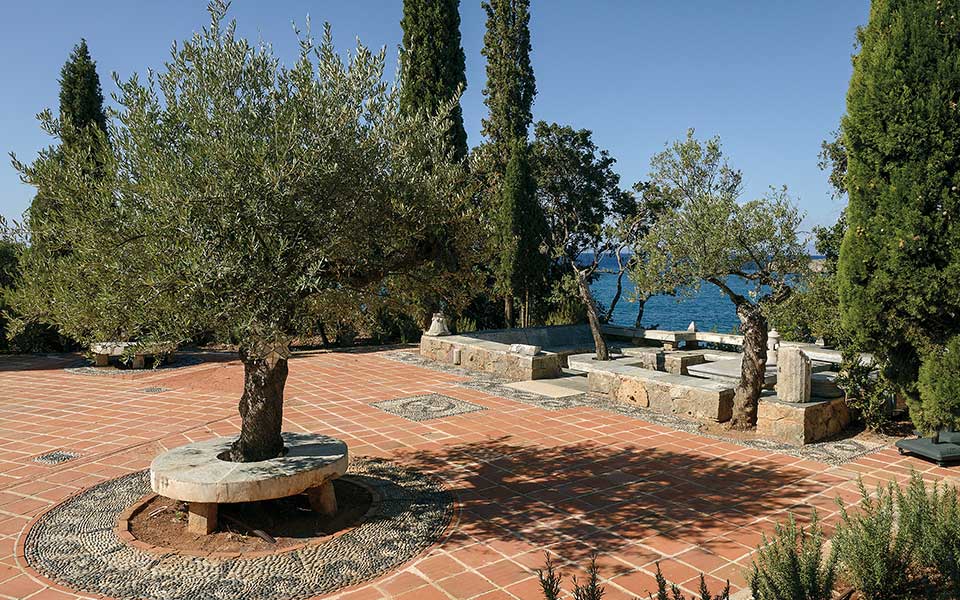
© Benaki Museum/Leonidas Kourgiantakis
Artemis Cooper, Paddy’s biographer, who became as close to the Leigh Fermors as anyone still living, recalled the first time she visited, accompanied by her husband, the British historian Antony Beevor. “I remember the long, hot road and the feeling that, after all that dust and sweat, you were entering another world. It was a calm night with millions of stars…We were six people around the marble table with a sea view: Paddy and Joan, Xan Fielding [PLF’s closest friend and former SOE agent in Crete] and his wife Maggie, Antony and me.”
That night they dined on roast chicken stuffed with black olives, and drank red wine from Nemea, a favorite of Paddy’s. “What did we discuss that night? I don’t remember anything except the velvet night, the sound of the sea, the faces in the candlelight, the laughter and the voices – and the thought that nothing could be better than that moment.”
In 1996, Paddy and Joan made the decision to bequeath their home to the Benaki Museum. The house was to be used to host researchers “looking for a quiet and hospitable place to work.” Seven years later, Joan passed away, after a fall at the house. Paddy soldiered on. By the late 2000s he was tiring and declining interview requests. Visitors were few. But in the last year of his life, I had the honor of meeting him.
On a trip to the Mani in the summer of 2010, a chance conversation with the grocer on Kardamyli’s main street brought up Paddy’s name. “Would you like to meet Mihalis?” said the shopkeeper (using the name Paddy had been known by in Greece since the war years). “Let me call him.” The meeting was arranged by phone for the same morning. Near the post office, I excitedly bought a paperback copy of Paddy’s book “Mani –Travels in the Southern Peloponnese,” a volume which I’d first bought and read 20 years earlier.
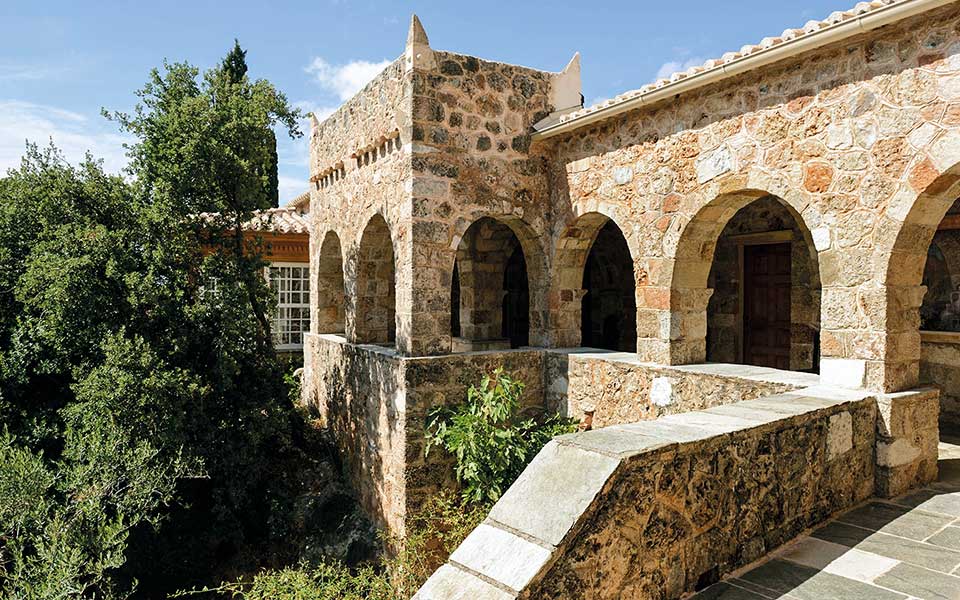
© Benaki Museum/Leonidas Kourgiantakis
The drive from the village to the headland above Kalamitsi Beach takes a few minutes. After a gentle ascent by foot through the olive trees, I was there. Elpida Beloyannis, his housekeeper, greeted me and led me to Paddy’s studio where the legendary writer, war hero and polymath greeted me with a warm but frail handshake. Almost immediately, he spoke of his work on the third and final volume of his trek across Europe in the 1930s, which he was struggling to complete.
I remember my sense of awkward humility as Elpida took a photograph of us together. Just before leaving, I asked if he would sign the Mani book for my son Alexander, then six years old. He smiled at hearing the name, and wrote in Greek “To Alexander, signed by Patrick Leigh Fermor – brothers in arms.”
That was Paddy’s last summer. He stayed on at Kardamyli until the 9th of June 2011, when he left Greece for the last time. He died in England the following day. As had been his wish, he was buried beside Joan. On his gravestone is an inscription in Greek, a quotation from Constantine Cavafy: “In addition, he was that best of all things, Hellenic.”
In the immediate years after Paddy’s death, the house remained largely untouched, with Elpida, employed by the Benaki Museum, acting as its caretaker. In 2014, it was opened to visitors. Delays in obtaining licenses to begin necessary repairs meant that it wasn’t until 2017 that significant renovations (overseen by the museum) could begin, funded by a donation from the Stavros Niarchos Foundation.
Eighteen months later, the works were complete. The original structure of the house – with few interventions – has allowed for the creation of five guest rooms, each with its own work space. Communal rooms will be used for what Paddy and Joan always intended: for relaxation and reflection, for sharing ideas and inspiration, and for joyful celebrations.
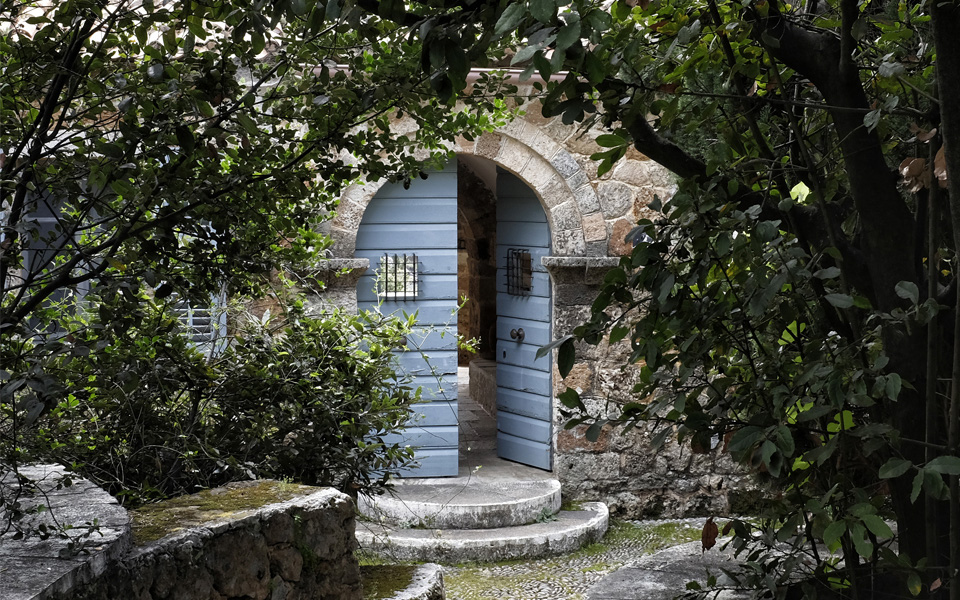
© Julia Klimi
A Respectful Makeover
by Alexandra Mandrakou
Whether you know about architecture or not, as you step through the blue door into the beautiful courtyard of the Leigh Fermor House in Kalamitsi in the southern Peloponnese and walk across the pebble mosaic created by the distinguished Greek artist Nikos Hadjikyriakos-Ghika, you’re bound to marvel at how discreetly and tastefully this historic property has been renovated.
Carried out by the award-winning architectural firm of Maria Kokkinou and Andreas Kourkoulas, the daunting task of remodeling the cut-stone complex into five independent suites has been accomplished so successfully that the interventions are almost imperceptible to the untrained eye – as was the intention all along.
“We had to meet a very specific target at the Leigh Fermor House, where the main creative challenge was to keep its character intact,” says Kokkinou.
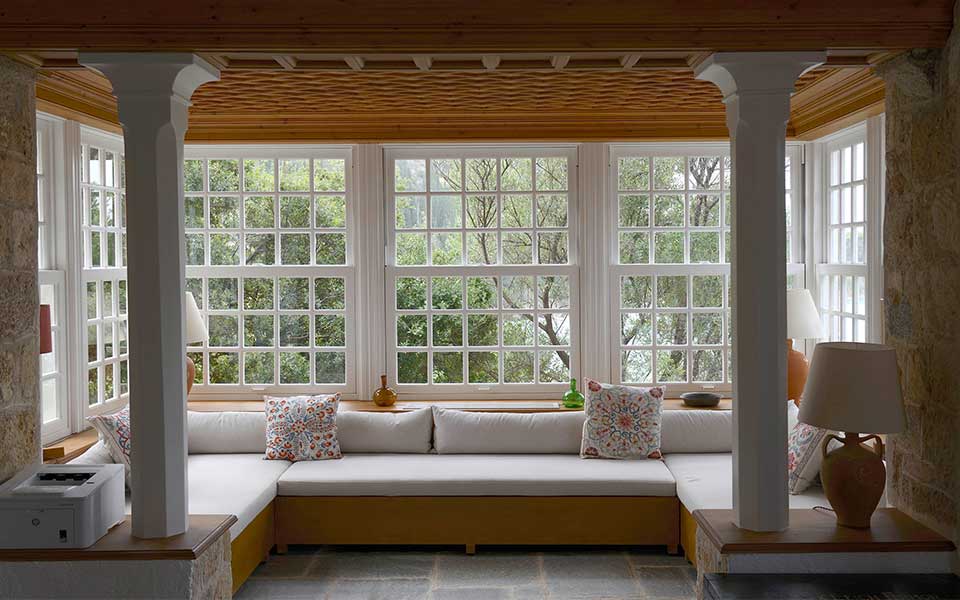
© Benaki Museum/Leonidas Kourgiantakis
The house is perched on a hill, which only adds to its charm. “There are views all around,” Kokkinou notes.” There’s an incredible sense of tranquility in the garden, and great liveliness inside.”
Every major interior space, including Leigh Fermor’s office and the maid’s quarters, has been sectioned off and given an en-suite bathroom. They changed the roof, modernized the casings so as to improve energy efficiency and passed all the electrical wiring through the ceiling so that it wouldn’t be visible.
“Leigh Fermor had thoroughly studied the surrounding area and, in his mind, had built a traditional Maniot house with beamed ceilings and arches. But this house had completely different proportions and its layout was reminiscent of a monastery, with corridors adjoining all the rooms. It’s the home of Leigh Fermor, the home of a legend,” says the architect.
“It is made of stone and entirely integrated into the surrounding landscape, with local flagstones similar to those used in Pilio and with many elements inspired by his travels, such as the handmade tiles and lamps he brought from Morocco. He had made several pieces of furniture himself – all of which have been restored in their entirety – and every room had a fireplace providing heat,” explains Kokkinou.
“Our brief was to maintain this special atmosphere while modernizing the rooms,” says the architect. “This is what the Benaki Museum wanted, but it’s also what we wanted.”

